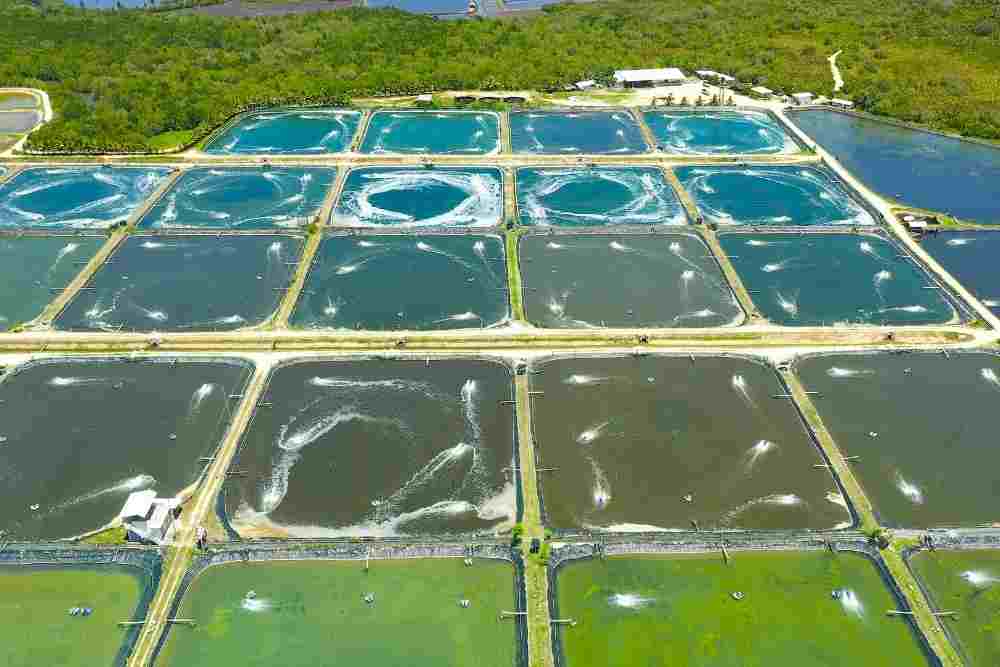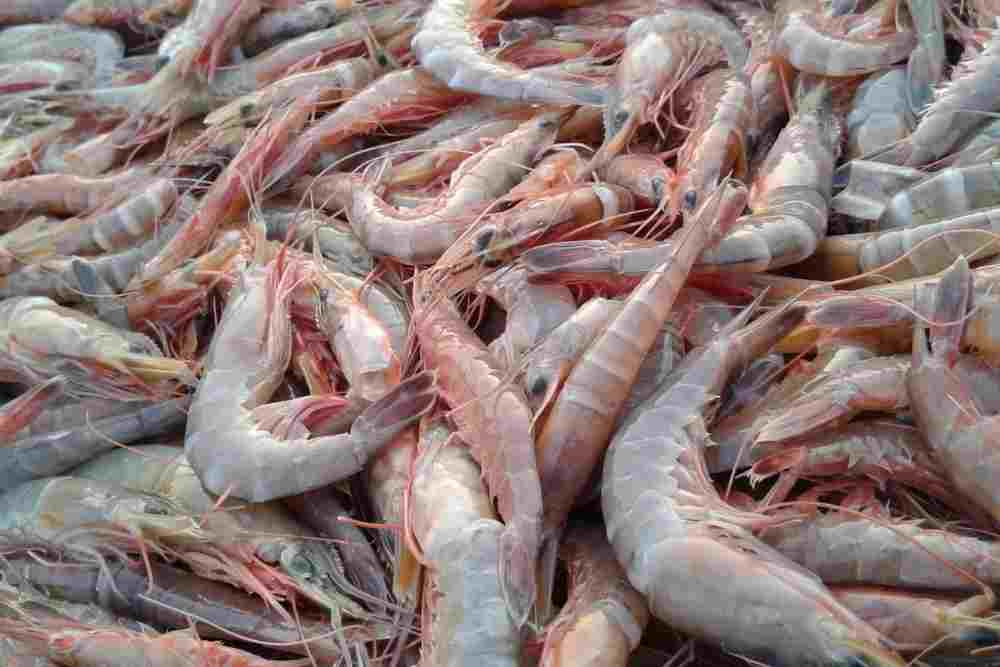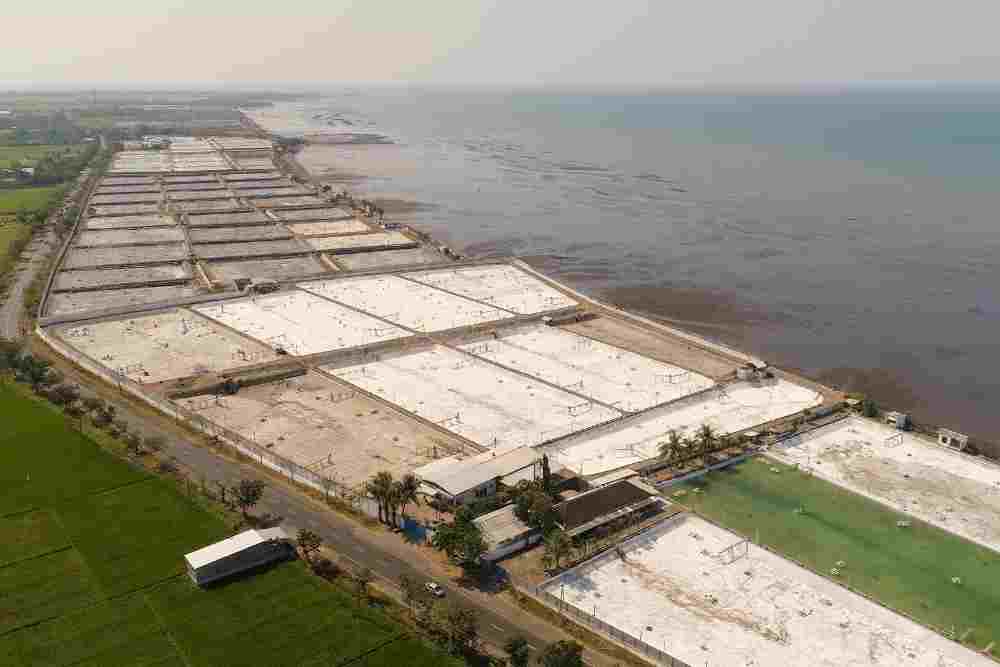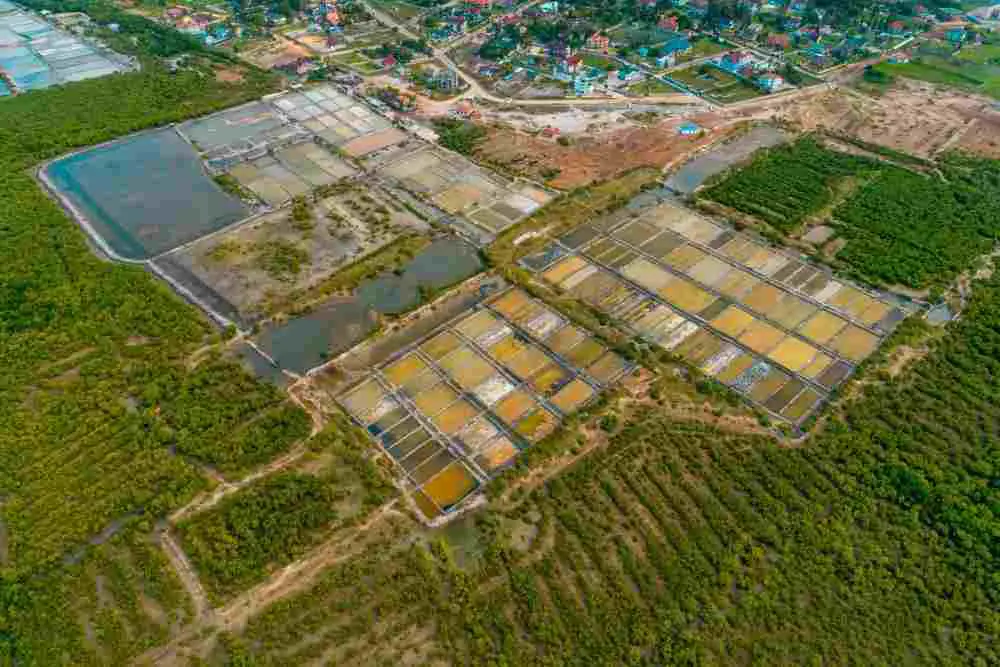Shrimp farming has become a popular way to produce shrimp, as it offers many benefits over traditional fishing. However, there are also some potential challenges associated with shrimp farming.
The article focused on benefits and limitations of shrimp farming worldwide.

Shrimp Farming
Shrimp farming is the process of raising shrimp in a controlled environment as opposed to letting them breed and grow naturally. This controlled environment can be an indoor or outdoor tank, raceway, or pond.
The most common method of farming shrimp is in brackish water or saltwater environment.
Shrimp farming is the process of commercially raising shrimp in ponds, tanks, or raceways. The first shrimp farms were established in the early 1970s in Thailand and Taiwan.
Shrimp farming has since become an important aquaculture industry, providing income for thousands of people and a major source of seafood for millions of consumers.
Types of Shrimp Farms
There are several types of shrimp farms, each with their own advantages and disadvantages. Some of the most common types include:
1. Extensive or traditional pond based farming
This method involves using lower densities of shrimp in large ponds, with minimal inputs such as feed and aeration. This method is commonly used in developing countries where labor is cheap.
This is the most traditional and widely used method of shrimp farming. Ponds are excavated and lined with clay or plastic to hold water, and shrimp are raised in these ponds.
2. Intensive or semi-intensive farming
This method involves using higher densities of shrimp in smaller ponds, with the use of aeration and recirculation systems to keep the water clean and oxygenated.
2. Biofloc technology
This method is based on the use of microorganisms (microflora) to treat the waste products generated by shrimp, thus reducing the need for water exchange and the use of chemicals.
4. Recirculating Aquaculture Systems (RAS)
This method involves using a closed-loop water system to recycle water, which allows for higher densities of shrimp and a reduced environmental impact.
Benefits of Shrimp Farming

Shrimp farming has been around for centuries, but it is only in the past few decades that shrimp farming has become a large industry. Shrimp farming can provide several benefits, including:
1. Economic benefits
It creates jobs and supports local economies by providing a market for local farmers and fishermen. Shrimp farms also generate tax revenue for local governments.
Shrimp are also easy to farm, and they grow quickly, which means that farmers can generate a good return on their investment relatively quickly.
2. Food security
Shrimp farming can help to improve food security by providing a source of protein that is in high demand worldwide.
Shrimp farming provides an important source of protein for people in developing countries, and it can help to reduce malnutrition rates in these areas.
3. Environmental benefits
Sustainable shrimp farming practices can help to protect and restore coastal ecosystems, such as mangrove forests, which provide important ecological services.
4. Reduced dependence on wild-caught shrimp
Shrimp farming reduce the pressure on wild shrimp populations, which are often overfished.
Farming shrimp instead of catching them from the wild can help to protect important habitats and ecosystems.
5. Innovation
With the development of new technologies and practices, shrimp farming has become more efficient and sustainable.
However, it’s important to note that these benefits are not guaranteed and are dependent on the management practices and regulations that are implemented.
Unsustainable practices can lead to negative environmental and social impacts, so it’s important to ensure that shrimp farms are operated in a responsible and sustainable manner.
Potential Challenges of Shrimp Farming

1. Disease Outbreak in Farms
Shrimp disease outbreaks have led to dramatic declines in output over the past two decades despite advances in science and technology that should theoretically increase yield; challenges for global shrimp leaders remain.
Shrimp farming has led to disease outbreaks that harm both wild populations and farmed shrimp stocks.
Shrimp are susceptible to a variety of bacterial diseases in captivity including white spot syndrome virus (WSSV), infectious hypodermal and hematopoietic necrosis virus (IHHNV), and yellow head disease virus (YHV).
Shrimp virus disease is a major threat to global shrimp farming. Shrimp producers must rely on their own resources for the management of viral diseases but have few tools so far with which to combat them.
Early mortality syndrome is a disease that affects marine ornamental shrimp. Shrimp mortality due to early-mortality syndrome has been reported from many countries in Asia, including Thailand and China.
2. Effluent Management
Shrimp ponds require large areas for proper effluent management, disease treatment, and prevention, harvesting equipment storage, processing facilities for live or fresh product marketing.
Shrimp farming can also lead to pollution issues due to poor effluent management, which may be a result of the high-density nature of intensive production.
3. Mangrove Habitats Disturbance

Shrimp aquaculture is an important component in mangrove deforestation and degradation.
Deforestation caused by shrimp farming can have serious consequences for local communities and ecosystems, including increased vulnerability to climate change, loss of fish habitats, and increased pollution.
Mangroves are important both ecologically and economically so maintaining the mangrove habitat is essential for sustainable shrimp farming.
Shrimp aquaculture practices often lead to the loss of mangrove habitat because this species is highly susceptible to high levels of sedimentation; also due to their small size near shore, they are more likely than other species to be exposed to water pollution.
4. Confliction with other Economic Activities
Shrimp farming also has the potential to cause land-use conflicts with other economic activities, including fisheries and tourism; mangrove deforestation is the main source of these disputes because it decreases shrimp habitat as well as fishery resources.
5. Environmental Degradation
Shrimp farming is a rapidly expanding industry, with production reaching an estimated 4.3 million tons in 2016.
This growth has come at a cost to the environment, with shrimp farming identified as one of the leading causes of mangrove deforestation worldwide.
Shrimp farms have been identified as one of the largest contributors to global environmental degradation, and a major contributor in coastal zone eutrophication as well.
Mangroves are coastal trees and shrubs that play a critical role in the environment, providing a nursery for marine life, buffering against storms and erosion, and storing carbon dioxide.
FAQs
How profitable is shrimp farming?
Shrimp farming can be a profitable industry, but it depends on various factors such as the location, the type of farming system used, the market demand, and the management practices implemented.
The cost of inputs such as feed, electricity, and labor can also have a significant impact on the profitability of a shrimp farm. Additionally, diseases and natural disasters can also greatly affect the profitability.
It’s important to conduct a thorough financial analysis before starting a shrimp farm to ensure that it will be financially viable.
Why sustainable shrimp farming is important?
Sustainable shrimp farming is important because it helps to protect the environment and the communities that depend on it while also ensuring long-term economic viability.
Unsustainable shrimp farming practices can lead to negative impacts such as the destruction of mangrove forests, pollution of coastal waters, and the spread of disease. These negative impacts can lead to a decline in the overall health of the ecosystem, loss of biodiversity and also can have social, economic and health effects on local communities.
Sustainable shrimp farming practices, such as using closed-system ponds or recirculating aquaculture systems, can reduce the environmental impact of shrimp farming and help to ensure the long-term viability of the industry. Additionally, implementing sustainable practices can also help to improve the reputation and marketability of the farm’s products.